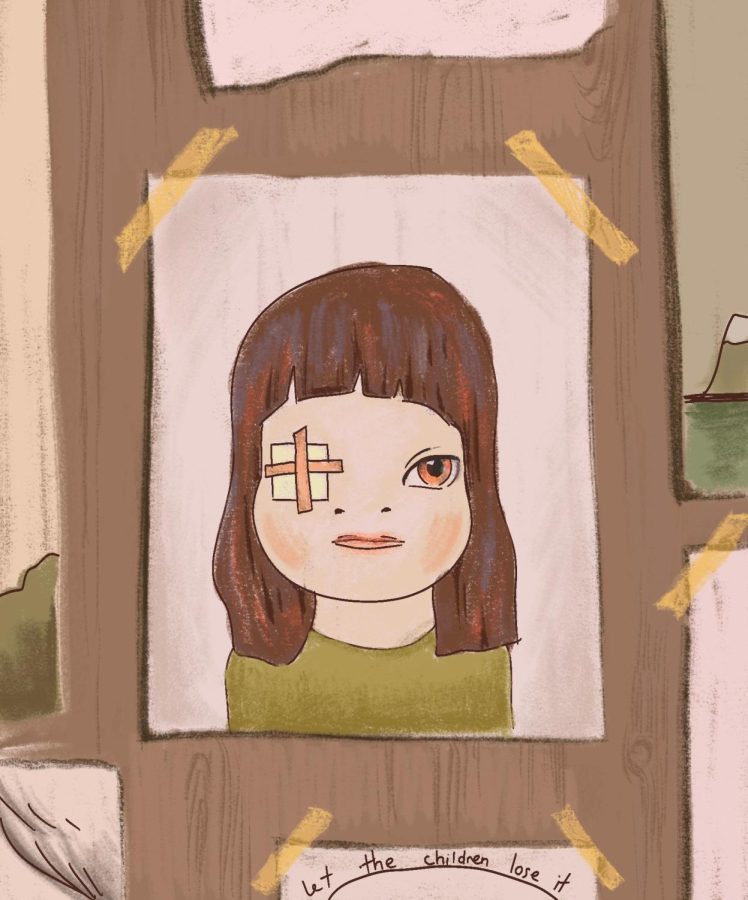Off The Walls: Yoshitomo Nara builds sweet and sinister world
Japanese artist captures the raw emotions and wonder of childhood
The androgynous children seem to belong to their own world, mirroring Nara’s own experiences of reconciling with himself. Nara’s paintings project a strong sense of solitary introspection, as if they hail from an entirely different mind—one alive with the childlike ability to lose oneself completely in a state of flow.
December 2, 2021
Why does Yoshitomo Nara’s work hold such an enchanting power to stick in the mind? Although at first glance the faces of his bulbous-faced, doe-eyed children may seem sweet and innocent, there’s something lurking deeper beneath the surface that subconsciously captivates us. The androgynous children belong to their own world, dealing with the harsh realities of their inner darknesses—guilt, hatred, loneliness—and mirroring Nara’s own experiences of reconciling with himself.
The longest-running retrospective of Nara’s art, encompassing 30 years of his work, currently resides at the Los Angeles County Museum of Art, calling into question all the rich influences—from punk music to childhood memories—that Nara has drawn upon during his long career. I find a surprising sense of refuge when looking into his paintings, as if I’m peering into a universe dominated by Nara’s singular vision, his rare ability to translate his worldview vividly onto the canvas.
Nara grew up in the Aomori prefecture of Japan, spending the first few years of his childhood in a home surrounded by an open field. He created his own distinctive world in that first house, fascinated by the small things—the grass, the flowers, the animals—that made up his daily sphere. To me, Nara’s paintings project a strong sense of solitary introspection, as if they hail from an entirely different mind—one alive with the childlike ability to lose oneself completely in a state of flow.
The children in his drawings, not meant to be perceived as male or female, exist in the liminal state of a young mind grappling with the world. They find themselves filled with feelings of angst, rebellion—riding the emotional rollercoaster of being happy, sad, excited or lonely. Most of all, I love Nara’s ability to continually draw from his past and capture the rawness of childhood. He immerses himself in turning his gaze inward, exploring the essence of human nature—following the flow of inner consciousness to always discover something new.


















![“[Building nerf blasters] became this outlet of creativity for me that hasn't been matched by anything else. The process [of] making a build complete to your desire is such a painstakingly difficult process, but I've had to learn from [the skills needed from] soldering to proper painting. There's so many different options for everything, if you think about it, it exists. The best part is [that] if it doesn't exist, you can build it yourself," Ishaan Parate said.](https://harkeraquila.com/wp-content/uploads/2022/08/DSC_8149-900x604.jpg)




![“When I came into high school, I was ready to be a follower. But DECA was a game changer for me. It helped me overcome my fear of public speaking, and it's played such a major role in who I've become today. To be able to successfully lead a chapter of 150 students, an officer team and be one of the upperclassmen I once really admired is something I'm [really] proud of,” Anvitha Tummala ('21) said.](https://harkeraquila.com/wp-content/uploads/2021/07/Screen-Shot-2021-07-25-at-9.50.05-AM-900x594.png)







![“I think getting up in the morning and having a sense of purpose [is exciting]. I think without a certain amount of drive, life is kind of obsolete and mundane, and I think having that every single day is what makes each day unique and kind of makes life exciting,” Neymika Jain (12) said.](https://harkeraquila.com/wp-content/uploads/2017/06/Screen-Shot-2017-06-03-at-4.54.16-PM.png)








![“My slogan is ‘slow feet, don’t eat, and I’m hungry.’ You need to run fast to get where you are–you aren't going to get those championships if you aren't fast,” Angel Cervantes (12) said. “I want to do well in school on my tests and in track and win championships for my team. I live by that, [and] I can do that anywhere: in the classroom or on the field.”](https://harkeraquila.com/wp-content/uploads/2018/06/DSC5146-900x601.jpg)
![“[Volleyball has] taught me how to fall correctly, and another thing it taught is that you don’t have to be the best at something to be good at it. If you just hit the ball in a smart way, then it still scores points and you’re good at it. You could be a background player and still make a much bigger impact on the team than you would think,” Anya Gert (’20) said.](https://harkeraquila.com/wp-content/uploads/2020/06/AnnaGert_JinTuan_HoHPhotoEdited-600x900.jpeg)

![“I'm not nearly there yet, but [my confidence has] definitely been getting better since I was pretty shy and timid coming into Harker my freshman year. I know that there's a lot of people that are really confident in what they do, and I really admire them. Everyone's so driven and that has really pushed me to kind of try to find my own place in high school and be more confident,” Alyssa Huang (’20) said.](https://harkeraquila.com/wp-content/uploads/2020/06/AlyssaHuang_EmilyChen_HoHPhoto-900x749.jpeg)







